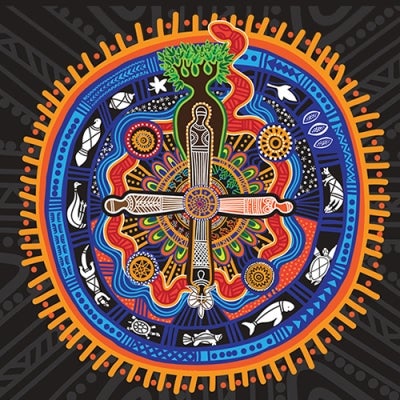Refine results
-
14 December 2012Book page
Bringing them home - Downloads
DVD activity sheet PDF or Word (note that DVD needs to be ordered separately from the Commission’s publications area, Ph: (02) 9284 9600, or online at: www.humanrights.gov.au/publications) -
Commission – General14 December 2012Webpage

Links to Human Rights Organisations and Resources
This website contains links to other websites that are external to the Australian Human Rights Commission. The Commission takes reasonable care in linking websites but has no direct control over the content of the linked sites, or the changes that may occur to the content on those sites. It is the responsibility of the user to make their own decisions about the accuracy, currency, reliability and… -
14 December 2012Book page
Bringing them Home - Chapter 16
That's why I wanted the files brought down, so I could actually read it and find out why I was taken away and why these three here [siblings] were taken by [our] auntie ... Why didn't she take the lot of us instead of leaving two there? ... I'd like to get the files there and see why did these ones here go to the auntie and the other ones were fostered. Confidential evidence 161, Victoria. -
Education14 December 2012Webpage
Bringing them home - Community Guide - 2007 update
A community guide to the findings and recommendations of the National Inquiry into the separation of Aboriginal and Torres Strait Islander Children From Their Families -
14 December 2012Book page
Bringing them Home - Chapter 24
The most distressing aspect about the level of juvenile justice intrusion in the lives of young Aboriginal and Torres Strait Islander people is the fact that entry into the system is usually the start of a long career of incarceration for many (SNAICC submission 309 page 28). -
14 December 2012Book page
Bringing them Home - Chapter 21
Indigenous children throughout Australia remain very significantly over-represented `in care' and in contact with welfare authorities. Their over-representation increases as the intervention becomes more coercive, with the greatest over-representation being in out-of-home care. Indigenous children appear to be particularly over-represented in long-term foster care arrangements. A high percentage… -
14 December 2012Book page
Bringing them Home - Chapter 26
An entrenched pattern of disadvantage and dispossession continues to wreak havoc and destruction in Indigenous families and communities. This situation has been described in the preceding chapters of this Part. State and Territory legislation, policy and practice in the areas of child welfare, care and protection, adoption and juvenile justice do not comply with the evaluation criteria… -
14 December 2012Book page
Bringing them Home - Chapter 1
Our life pattern was created by the government policies and are forever with me, as though an invisible anchor around my neck. The moments that should be shared and rejoiced by a family unit, for [my brother] and mum and I are forever lost. The stolen years that are worth more than any treasure are irrecoverable. Confidential submission 338, Victoria. -
14 December 2012Book page
Bringing them Home - Chapter 14
The Government has to explain why it happened. What was the intention? I have to know why I was taken. I have to know why I was given the life I was given and why I'm scarred today. Why was my Mum meant to suffer? Why was I made to suffer with no Aboriginality and no identity, no culture? Why did they think that the life they gave me was better than the one my Mum would give me? -
14 December 2012Book page
Bringing them Home - Chapter 11
Actually what you see in a lot of us is the shell, and I believe as an Aboriginal person that everything is inside of me to heal me if I know how to use it, if I know how to maintain it, if I know how to bring out and use it. But sometimes the past is just too hard to look at. Confidential evidence 284, South Australia. -
Aboriginal and Torres Strait Islander Social Justice14 December 2012Publication
Submission: Human rights and fundamental freedoms of Indigenous people
The Australian Human Rights and Commission has made a submission on behalf of the Indigenous Peoples Organisation Network (IPON) of Australia to Professor S. James Anaya, UN Special Rapporteur on the human rights and fundamental freedoms of Indigenous Peoples, on the current status of Indigenous human rights in Australia for his Mission to Australia which is taking place from 17-28 August 2009. -
Legal14 December 2012Webpage
National Human Rights Consultation - Appendix 2
The Declaration recognises the legitimate entitlement of Indigenous people to all human rights – based on principles of equality, partnership, good faith and mutual benefit... -
Legal14 December 2012Webpage
Comments by the Australian Human Rights Commission to the United Nations Human Rights Committee on issues relevant to Australia’s fifth periodic report under the ICCPR (2008)
The Australian Human Rights and Commission (the Commission) provides these comments to the United Nations Human Rights Committee (the Committee) in response to the Committee’s request for information relevant to Australia’s fifth periodic report under the International Covenant on Civil and Political Rights (ICCPR).[1] -
Legal14 December 2012Webpage
Information concerning Australia and the International Convention on the Elimination of All Forms of Racial Discrimination (ICERD) (2010)
Recommendation 2: That the proposed Joint Parliamentary Committee on Human Rights be empowered to make recommendations in relation to the implementation of ICERD Committee Concluding Observations. -
Rights and Freedoms3 March 2023Speech
'Reflections on women’s rights – past, present and future’
This presentation draws together reflections on women’s rights from the campaigns by the suffragists and suffragettes of the late 19th century and a consideration on how far we have come in realisation of women’s rights.
